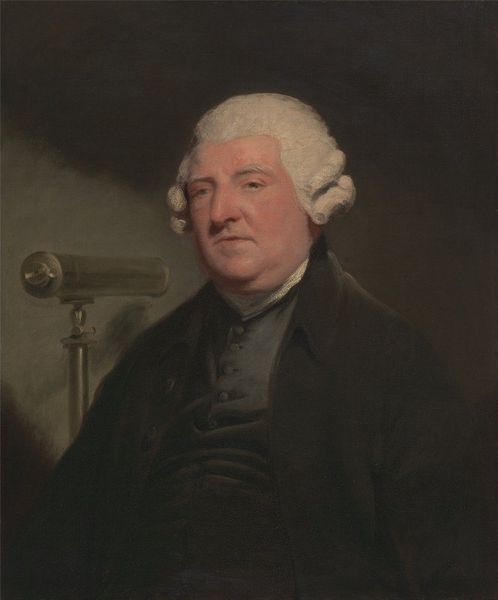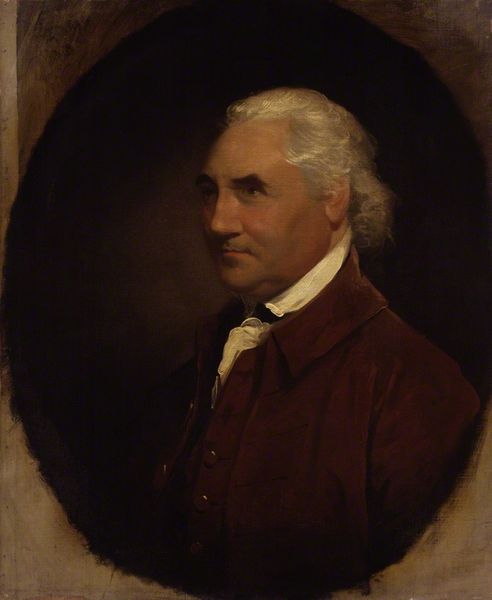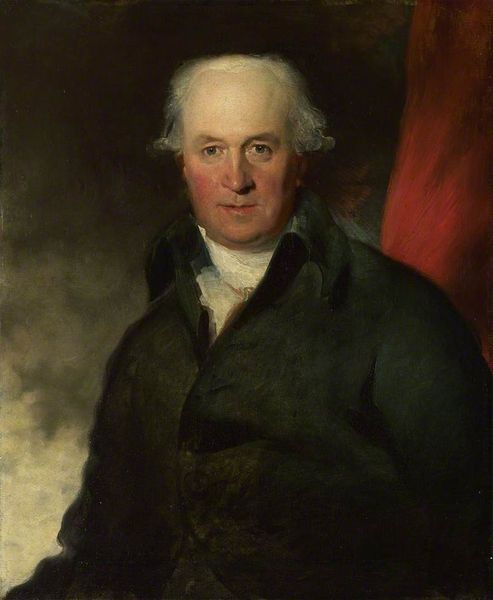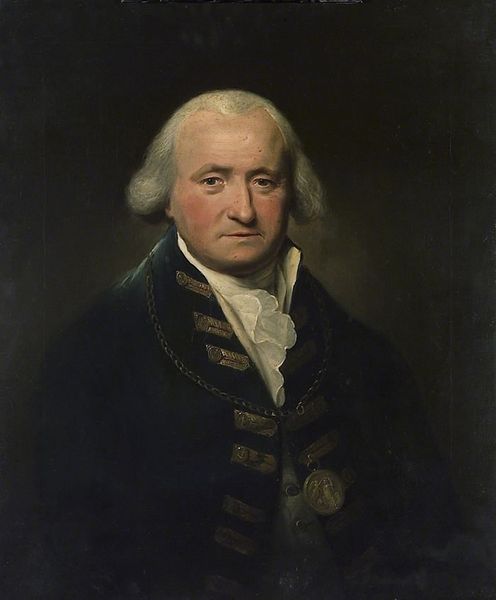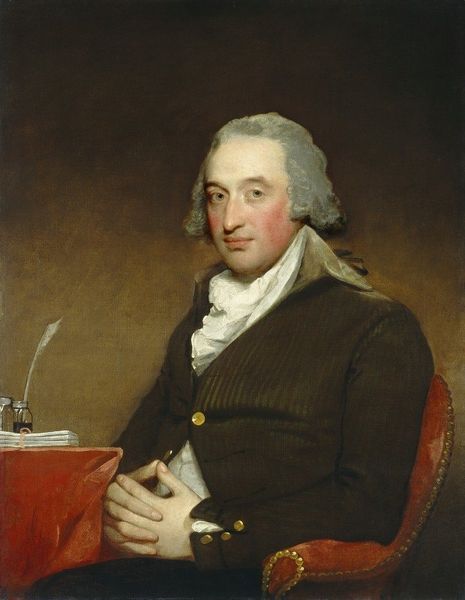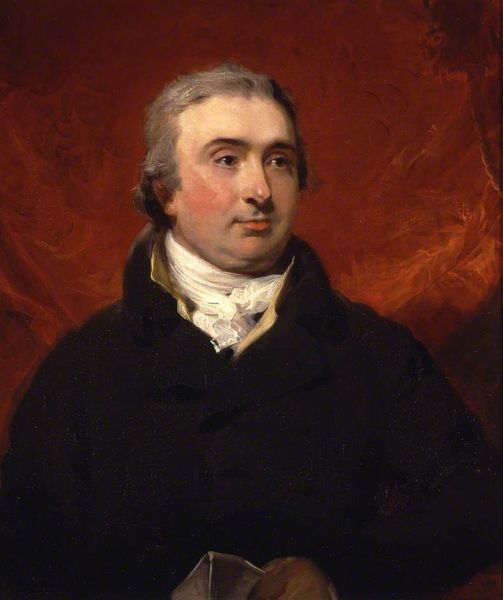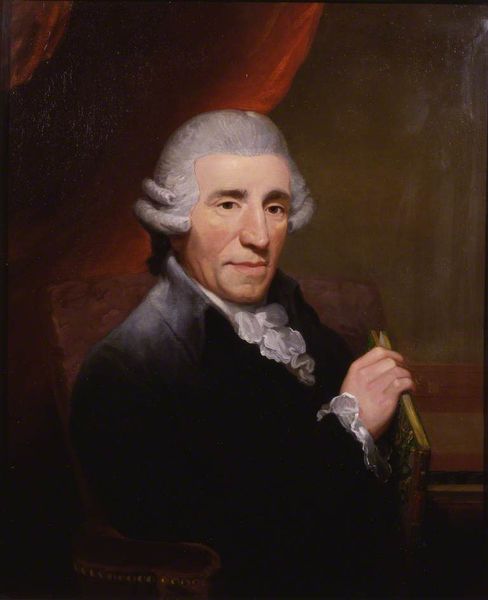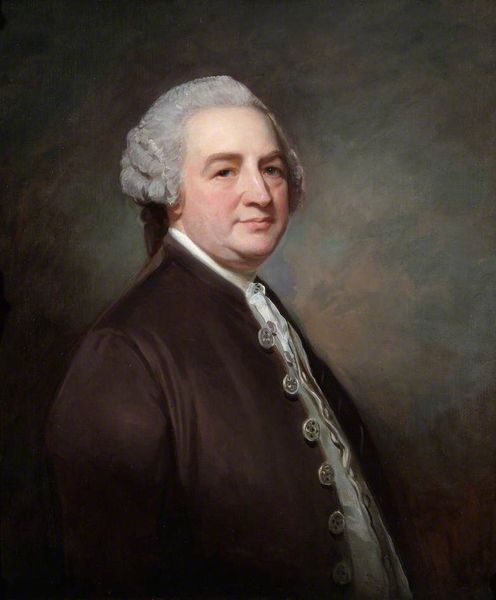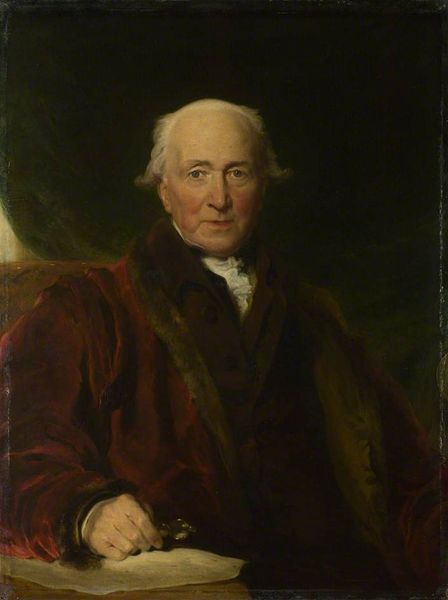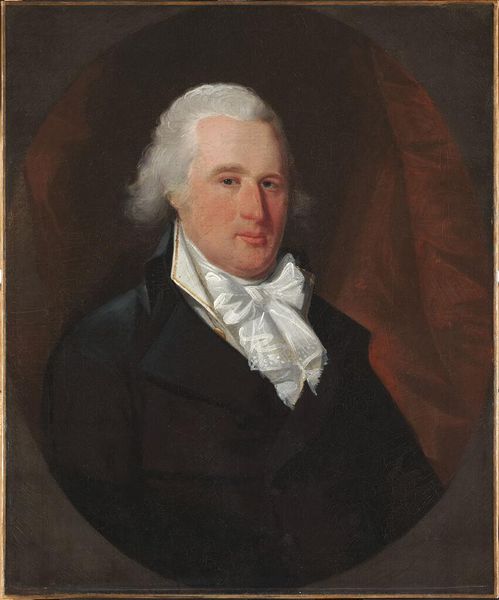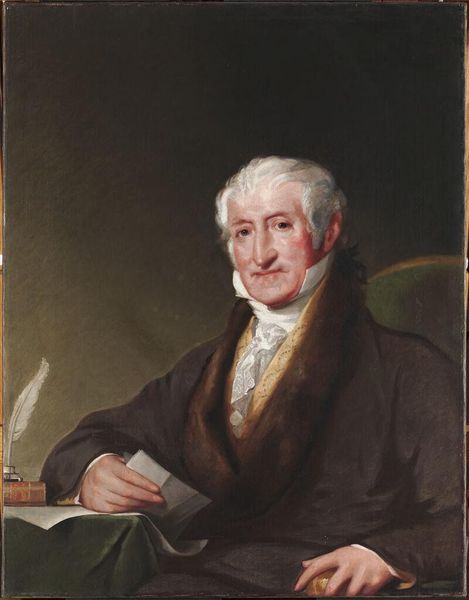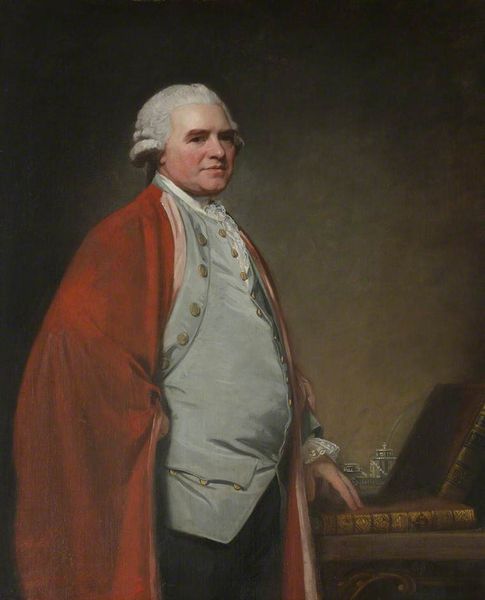
painting, oil-paint
#
portrait
#
portrait
#
painting
#
oil-paint
#
romanticism
#
academic-art
Copyright: Public domain
Curator: Let’s spend some time discussing this portrait by George Romney of Henry Bayly Paget, the first Earl of Uxbridge. It was painted in 1811, when Paget was 67 years old. Editor: First glance? Hmm, feels very...composed. Dignified, certainly. Lots of dark hues enveloping a very strategically lit face. Like he's emerging from the shadows of his own accomplishments, maybe? Curator: That’s a fitting observation. Paget had a distinguished military and political career. Looking at this painting through an intersectional lens, it's vital to remember the context of British colonial power during this period. His position was undoubtedly built upon, and benefited from, the imperial project. Editor: Absolutely, that sombre, stately mood definitely speaks of the privileges of power, but those slightly watery eyes… something softer lurks there too, maybe a touch of weariness with it all? Romney’s captured a duality, don’t you think? Curator: Precisely. Romney doesn’t shy away from showing a man marked by time and responsibility, not simply portraying a symbol of authority. Consider the nuanced brushwork, especially around the eyes and mouth, which gives him such vulnerability. Editor: The painterly style and restrained colour palette really draws your focus to his face, inviting speculation. And the stark white of his ruffled collar juxtaposed against that inky coat makes him pop—but almost in a ghostly way, oddly ethereal. Curator: And if you examine how Romney uses light, there's a real sense of Romanticism – emphasizing emotion, individualism, and the sublime, even in portraiture. His identity is tied not just to position, but to inner experience. Editor: I wonder if Paget ever gazed upon this canvas and mused upon his legacy… Did he consider the moral complexities? Probably not enough! Still, as an artwork, it sparks a certain fascination; an enigmatic, slightly melancholy window into a different era, really. Curator: It allows us to reflect on the complex tapestry of history. I'm so glad that this prompted critical dialogue that places artworks in the flux of their time. Editor: Indeed! Each look can peel back another layer. It whispers possibilities of stories untold—stories only hints and strokes on canvas can share, finally!
Comments
No comments
Be the first to comment and join the conversation on the ultimate creative platform.
